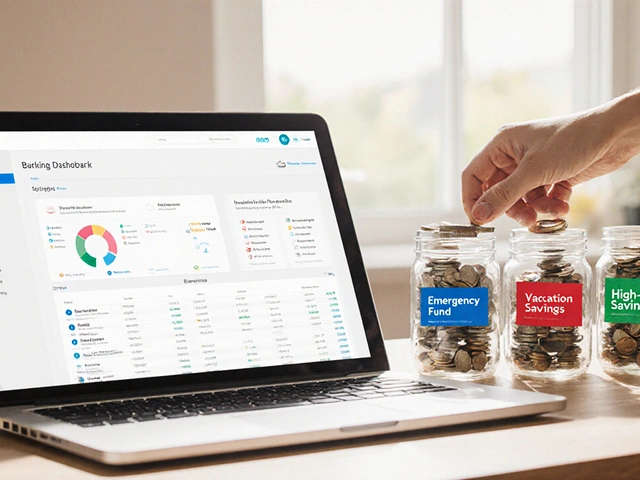
Ever heard someone say, “If you’ve got an OCI card, you’re as good as an Indian citizen for everything except voting and government jobs”? Well, when it comes to getting a loan in India, the story isn’t that simple. There’s money at stake, paperwork that feels never-ending, and myths that swirl around every NRI WhatsApp group. If you’re holding an Overseas Citizen of India (OCI) card and thinking about buying a house, funding a startup, or bridging a cash crunch back home, it can feel like wading through a maze. Let’s cut through the confusion and see what really happens when an OCI tries to get a loan in India today.
OCI Cardholders in India: Your Legal Standing and What It Means for Loans
First up, what is an OCI anyway? OCI—Overseas Citizen of India—is a lifelong visa that’s almost like having permanent residency. Since 2005, it’s basically been India’s way of saying, “We can’t give you a passport, but we won’t treat you like a stranger.” OCI cardholders can do most things Indian citizens can: own property, start a business, pay taxes, open bank accounts, stay in the country for as long as they want. But there’s a catch with the word “most.” Certain rights don’t apply—voting, holding constitutional posts, and buying agricultural land are off the table. But for regular banking and loans? That’s where the story gets good.
Indian banks see OCIs as a bridge between India and the world. They want your deposits, your remittances—and yes, they do offer loans to OCIs. The Reserve Bank of India (RBI) has greenlit most loan products for OCIs, including home loans, car loans, personal loans, and even business loans. But each bank has its own fine print. Generally, the big private banks—HDFC Bank, ICICI Bank, Axis Bank—and several public sector banks like SBI are ready to lend. The RBI isn’t the only door you need to open, though. Every lender will have eligibility filters you have to walk through. Some will ask where you earn your money, what currency you make it in, and whether you pay Indian taxes. Some will require you to have a co-applicant who is an Indian resident. And for home loans, your rights are almost identical to that of an NRI (Non-Resident Indian).
Got your mind set on real estate? There’s more good news. OCIs can buy almost any property in India except agricultural land, plantations, and farmhouses. That takes away a huge question mark. Banks love lending for city apartments or builder-approved homes because the paperwork is usually straightforward. If you’re eyeing a loan for something more complicated—like a plot in a developing area, a commercial property, or funding for a startup—you will want to be ready for some extra scrutiny.
This doesn’t mean the process is a breeze. Every financial institution still has the right to say yes or no based on their internal policies. But the basic rule is, as long as you can show legal proof of income (even from overseas), stable banking history, and clear ties to India (your OCI card, Indian bank account, local address), chances are pretty good you’ll get a fair shot. That puts OCI cardholders ahead of foreign nationals, who find it much tougher to get Indian loans at all.
Fun fact: According to 2024 data from the Ministry of Home Affairs, there are nearly 5.5 million OCI cardholders worldwide. With such a big community, more and more banks are creating tailor-made loan options just for OCIs and NRIs, tapping into a market that’s expected to double by 2030.
Types of Loans Available to OCI Cardholders in India
When folks talk about “getting a loan,” most are thinking about a home loan. But can OCIs borrow for other needs too? Absolutely—and the menu is bigger than you’d expect. Here’s what’s on offer if you walk into an Indian bank today with an OCI card in hand:
- Home Loans: The most popular pick for OCIs. Use these to buy a flat, villa, or constructed property. The LTV (Loan-to-Value) ratio usually goes up to 80% for OCIs, sometimes even higher if your repayment history is strong.
- Plot Loans: Want to buy land? As long as it isn’t agricultural, banks are on board. You can build a house later or hold onto the plot—just don’t expect loans for farm or rural land.
- Loan Against Property (LAP): If you already have a property in India, you can use its value to get a sizable loan. OCIs love this option to invest in businesses or big-ticket purchases.
- Auto Loans: Dreaming about that Indian-made EV or an SUV for family visits? Banks will finance your wheels.
- Personal Loans: Smaller amount, flexible usage. Useful for emergencies, big events, or repaying other debts—but banks often demand a stronger credit profile for OCIs here.
- Education Loans: Have kids studying in India? OCIs can secure educational loans for recognized Indian universities, especially if the expenses are high.
Here’s what a typical bank might offer to an OCI (let’s use some real 2025 data as an example):
| Loan Type | Interest Rate (2025) | Tenure | Max Loan Amount |
|---|---|---|---|
| Home Loan | 8.2% - 9.0% | Up to 20 years | Up to ₹10 crore |
| Auto Loan | 7.9% - 8.75% | Up to 7 years | Up to 85% of car value |
| Personal Loan | 11% - 15% | 1-5 years | Up to ₹50 lakh |
| LAP (Loan Against Property) | 9.5% - 11% | Up to 15 years | 60-70% of property value |
Some banks are stricter than others about where you earn your income and whether it comes through formal, documented channels. That means pay slips, ITRs (Indian Income Tax Returns), or foreign tax documents. Self-employed OCIs may face more documentation hurdles, especially if their earnings are inconsistent. Most Indian lenders want to see stable monthly income, either in INR or convertible foreign currency.
One underrated tip for OCIs? Choose your co-applicant wisely. If you co-apply with a parent, sibling, or spouse who lives full time in India and is earning there, you’ll get more favorable rates and faster approval. Some banks even ask you to appoint a local Power of Attorney (POA) to help manage the loan if you’re living abroad most of the year. Simple POA templates are available and don’t cost much to register. Without one, you might get stuck running paperwork over international courier more than you care to.
For something like a business or startup loan, your chances depend deeply on your India-based partner. Most Indian banks still hesitate to offer big-ticket business funding to OCIs unless you have a local joint applicant or collateral on Indian soil. Try fintech lenders or NBFCs (non-banking financial companies) if banks seem too rigid—in 2024, fintech companies disbursed over ₹3,000 crore to NRIs and OCIs for unsecured purposes, according to the Indian Fintech Association.

Loan Application Process: Step-by-Step for OCIs in 2025
Applying for a loan as an OCI can feel intimidating if you imagine lots of red tape and slow-moving officials. But with digital banking taking over most processes in 2025, it’s not the paperwork marathon people fear. Here’s how the process usually breaks down.
- Choose Your Lender: Start with a bank where you already have an NRE/NRO account—banks love to deal with existing customers. Compare home loan interest rates, tenure, and customer reviews online before deciding.
- Get Pre-Approval: Most major Indian banks now offer online pre-approval for OCIs. Punch in your income details, property location, and submit scanned docs. You’ll get a provisional sanction letter if things look good.
- Document Submission: These are your must-haves:
- OCI card (clear scan front and back)
- Valid foreign passport
- NRE/NRO account statement for last 12 months
- Income proof—this could be salary slips, foreign bank statements, or tax returns
- Indian address proof—a utility bill, aadhar card, or rent agreement (if you’ve got one)
- Property documents (agreement to sell, title, NOC from builder, etc. for home loans)
- Appoint a POA (if required): If you’re not physically in India, you may need a Power of Attorney for property loan or LAP.
- Verification and Approval: The lender verifies your profile using automated credit checks, contacts references, and sometimes video-calls you for KYC. Expect a week or two for full verification.
- Loan Disbursal: If all’s clear, you’ll sign a digital loan agreement, and the funds go directly to the property seller’s or other vendor’s account. For other loans, they can credit your Indian bank account directly.
One classic reason for delay? Incomplete documents, or property papers that aren’t 100% legit. Check with the bank upfront for a detailed checklist. If you need a POA, getting it notarized and attested at an Indian embassy can take a few days to a couple of weeks, depending on the country. The use of DigiLocker and e-KYC by most major banks in 2025 means things move faster than ever—if you have digital copies of all your Indian and foreign IDs, you’ll love the streamlined process. Some banks have even started allowing video KYC for overseas applicants, cutting hours off in-person verification times.
Keep in mind, you may have to pay a bit more in processing fees than a resident Indian would (around 0.25%-1% extra in 2025). Also, not every bank will approve every type of loan for OCIs. Personal loans and unsecured lending are trickier but not impossible; banks just want to be certain you won’t disappear overseas leaving them chasing an unpaid debt. That’s why big secured loans—like home loans—are far easier to get. If you do get rejected, check out NBFCs or digital lenders serving the NRI/OCI market.
Last tip: Keep your Indian credit score healthy. CIBIL, India’s main credit bureau, now tracks even NRI/OCI borrowers with Indian bank accounts and loans. If you miss an EMI or default, it’ll follow you—no matter which country you’re logging in from next year.
Things OCIs Should Know Before and After They Get a Loan
The toughest part isn’t getting your loan approved—it’s making sure you play by every rule after that. Missteps can be expensive and even cost you the property. Here’s what OCIs need to keep in mind once the bank says yes.
- Repayment Rules: You’re allowed to repay loans with money remitted from overseas (from your NRE/NRO or FCNR accounts) or using local funds if you’re earning in India. You can’t repay a rupee loan for Indian property from an ordinary foreign account directly—that’s an RBI rule.
- Tax Implications: You’ll face TDS (Tax Deducted at Source) on property sales if you sell later, and may owe income tax in India if you rent out the property. Get clear with a tax advisor about India’s “deemed to accrue or arise” rule, which can surprise a lot of returning OCIs.
- Power of Attorney Management: Changing your POA mid-loan or skipping local compliance can stall disbursals or lead to legal hassles. Make sure your POA is specific and accepted by your bank—don’t just use a generic Google template.
- Prepayment Charges: RBI rules say home loan prepayments shouldn’t be penalized if made with your own funds, whether from India or overseas. But banks sometimes try to sneak in charges, especially for fixed-rate loans. Always check your loan sanction letter fine print and push back if you see a penalty anywhere.
- Refinancing Tips: Maybe rates drop in 2026 and you want a cheaper loan. OCIs can refinance with another lender, with most banks treating it as a new loan for paperwork. You might have to update your KYC, re-submit POA, and pay fresh processing fees—but you can save a packet.
If you plan to repatriate money or sell property, the FEMA (Foreign Exchange Management Act) governs how and how much you can send back. As of 2025, the cap stands at $1 million per financial year from property sale proceeds (if you acquired the property legally through inheritance, gift, or purchase with rupee funds). Trying to repatriate more without fixing the paperwork can trigger a compliance audit or even a freeze on funds.
And don’t ignore exchange rate headaches. Every rupee you borrow in India may cost you more or less to repay, depending on the INR-USD or INR-Euro rate when you’re paying from abroad. Lock in repayments during rupee dips if you can, or ask your bank for a multi-currency repayment arrangement. It saves a lot of stress—and money—if rates move the wrong way next month.
Let’s end with a myth-buster. Some OCIs worry they’ll face more scrutiny than resident Indians, or that banks might not trust them. The reality? Banks are in the business of lending, and with so many returning expats, they’ve streamlined processes to make things easier. From e-signatures and digital contracts to WhatsApp status updates on your loan—a lot has changed just in the last two years.
Think of it this way: If you walk in with clean documents, a clear repayment plan, and realistic expectations, most banks will see you as a dream customer. And if you hit a roadblock, just try the next lender—competitive pressure means you usually won’t have to wait long. That’s the Indian banking market in 2025: open to OCIs, hungry for your business, and more digital than ever before.








Write a comment